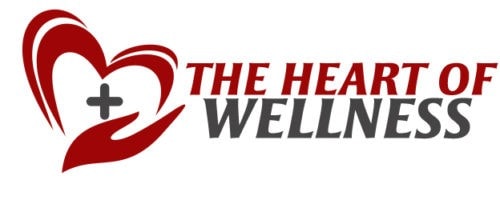What does your daily nutrition consist of? Do you follow a healthy eating plan or just eat whatever is in front of you without any planning or thought? Being mindful about planning out your meals is extremely helpful. Did you know that some food and beverages add more stress to your body?
Healing Nutrition
The digestive system needs to be functioning well to absorb nutrients. There are so many ways our nutrition can be compromised. If you are trying to heal and recover from an illness, it is necessary to support your body by adding healthier choices to your diet. In other words, your body cannot heal if you are consuming toxic and inflammatory foods.
Most diseases begin with some type of inflammation so it is crucial, especially for people with chronic conditions, to take a look at their diet and eliminate the likely offenders like sugar and dairy. Therefore a healthy eating plan is a must especially for those who struggle with chronic illness.
Portion Control
Besides cutting out sugar, one of the biggest changes I had to make was changing my portion sizes. I was eating large meals and too much food in one sitting. It got a little out of control! I am less hungry now that I started eating smaller meals and snacks. Portion control is the key to losing weight and staying on track with healthy eating. It will help to stabilize blood sugar and boost energy levels.
In addition, eating less at meals is also easier on your digestive system which in turn affects how the nervous system works as well. Overall, we need our nervous system to work at its best since it is the communication highway for our bodies. Good news! Portion control doesn’t have to mean deprivation. Here are some simple tips to get you started.
6 Healthy Eating Tips
Focus on eating whole foods including protein, healthy fats, and vegetables.
Eat until you are satiated (that feeling where you are about 80% full). Don’t deprive yourself since this always backfires, causing you to eat more food later in the day. Most processed foods have chemical additives that make it difficult for us to have just one serving size.
Include healthy fats in your diet.
This will help you feel satiated longer (and allow your body to absorb the fat-soluble vitamins your body needs). Ideas include avocado, nuts, seeds, olive oil, coconut oil, grass-fed butter, and ghee. Having a salad? You’ll feel full longer and absorb more nutrients if you add some fresh avocado or dressing that includes healthy fat, like olive oil.
Using smaller plates can be helpful.
When you put food on a large plate you almost automatically want to try to fill it up and then feel like you need to finish it all. By using smaller plates you may find that you eat less but still feel comfortably full.
Don’t skip meals.
This is one of the biggest mistakes people make, and it can sabotage the best efforts. Start your day with breakfast (preferably including some protein which will help you feel full longer) and plan for lunch. It’s also a good idea to bring a healthy snack with you to get you through the afternoon before dinner. Portion control is very difficult when you’re starving!
When snacking, place the snack on a plate rather than eating right out of the bag or container.
This is a huge help so you’re more aware of how much you are eating and you can better manage your portions this way.
Slow down.
By slowing down and enjoying our food more, we end up eating less. Remember to chew each bite more, relax, and enjoy!
A Little More Help
Healthy eating may take a little while to get used to but it’s so worth the time and effort. Feeling a little overwhelmed and don’t know where to start? Check out my other posts about Nutrition- Easy Ways to Clean Up Nutrition & Mindful Eating Tips.
xoxo
Jill DeMasi is a Lifestyle Blogger, Licensed Massage Therapist, and a Certified Wellness Coach with a passion for helping others manage Stress, Chronic Pain, and Anxiety. Learn more about her journey and wellness practice that offers natural solutions to stress at www.AtTheHeartofWellness.com.
Subscribe to my Lifestyle Blog!



Leave a Reply